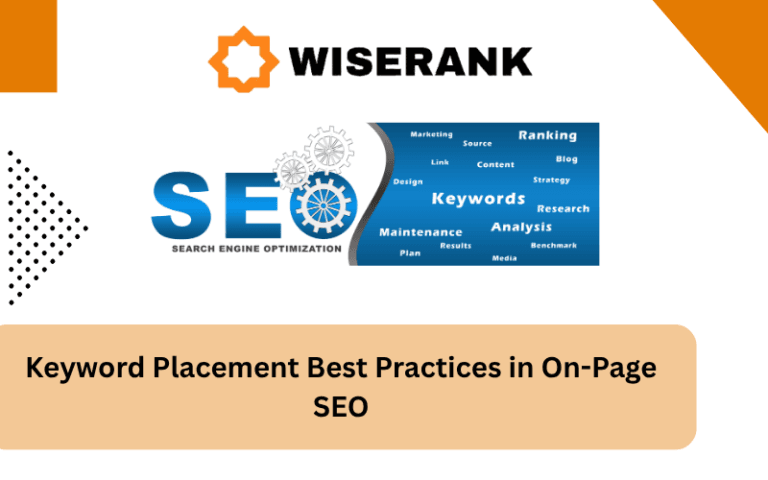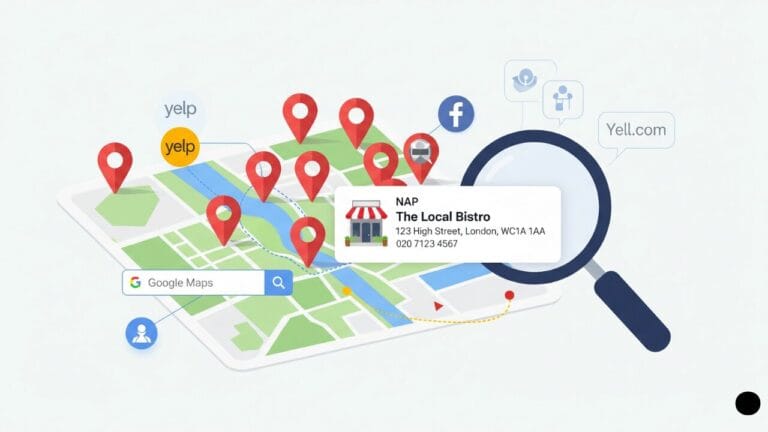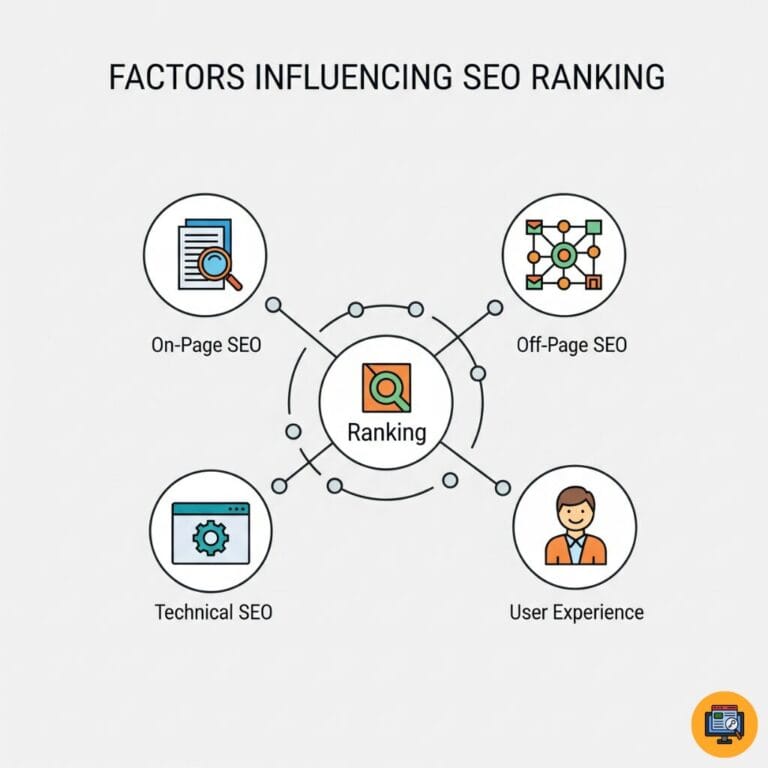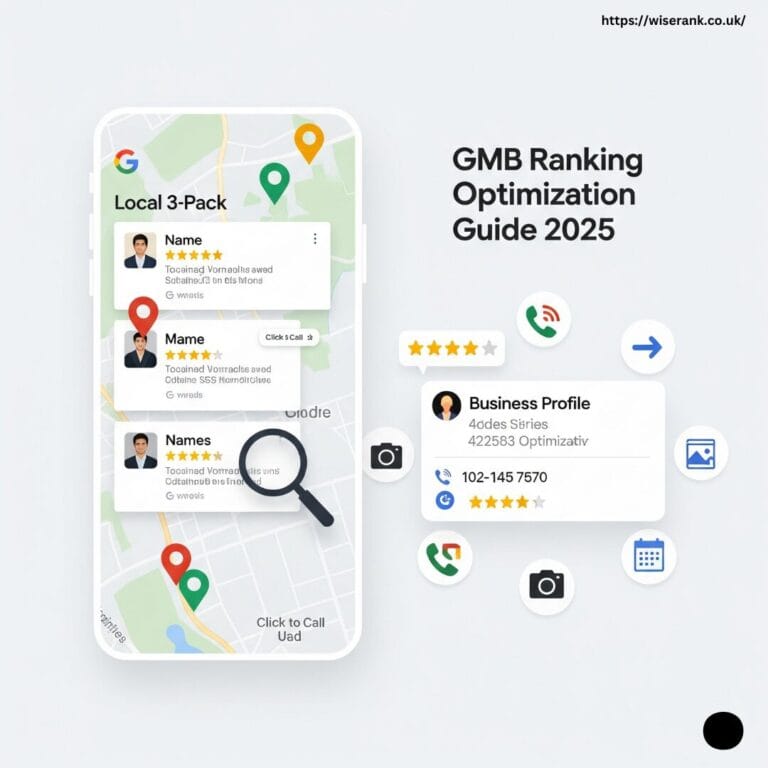Why Product Page SEO Matters for E-commerce Success?
Product page optimization is the foundation of successful e-commerce SEO. Your product pages are where search engines discover what you sell and where customers make purchase decisions, making them critical for both visibility and conversions.
Well-optimized product pages rank higher in search results, attract more organic traffic, and convert more visitors into buyers. Poor optimization leaves money on the table by hiding your products from potential customers searching for exactly what you offer.
Understanding E-commerce Search Intent
E-commerce shoppers use search engines differently than people seeking information. They have buying intent, compare options, look for specific products, and search for the best prices or deals before making purchase decisions.
Understanding commercial and transactional search intent helps you optimize product pages to match what customers actually want when they search. This alignment between search intent and page content improves both rankings and conversion rates.
Crafting Product Titles That Rank and Convert
Product titles serve dual purposes: helping search engines understand what you sell and convincing shoppers to click and buy. The best product titles balance SEO keywords with compelling sales copy.
Your product title appears in search results, on your page as the H1 heading, in shopping feeds, and across your site navigation. Getting this single element right impacts every aspect of product performance.
Essential Elements of Effective Product Titles
Include these components in your product page titles:
- Primary product name that customers search for
- Key product attributes like brand, size, color, or material
- Unique selling points that differentiate your product
- Relevant keywords customers use when searching
- Clear, descriptive language avoiding jargon
- Proper capitalization and readable formatting
- Concise length that displays fully in search results
Title Tag vs H1 Heading Strategy
Your title tag for SEO can differ slightly from your on-page H1 heading, with the title tag prioritizing keywords and the H1 focusing on converting visitors once they arrive.

Product Title Length Best Practices
Keep product titles between 50-70 characters for search engines while your on-page product name can be longer and more descriptive to help shoppers understand exactly what they are viewing.
Writing Product Descriptions That Sell and Rank
Product descriptions provide the detailed information search engines need to understand and rank your pages while giving customers the details they need to buy confidently.
Unique, comprehensive product descriptions improve search rankings, reduce return rates by setting accurate expectations, answer customer questions proactively, and establish expertise and trustworthiness.
Creating Unique Content for Every Product
Never copy manufacturer descriptions or duplicate content across similar products, as unique descriptions give you competitive SEO advantages and help each product page rank independently.
Balancing Features and Benefits
Describe what the product is and its specifications in feature lists, then explain how those features solve customer problems or improve their lives through benefit statements.
Optimal Product Description Length
Write 300-500 words for standard products, 500-1000 words for high-value or complex items, and 150-300 words minimum for simple commodity products with less differentiation.
Using Natural Keyword Integration
Include primary keywords naturally in the first paragraph, use related terms and variations throughout the description, incorporate question-based keywords when addressing customer concerns, and avoid keyword stuffing that makes content unreadable.
Optimizing Product Images for Search and Sales
Product images significantly impact both SEO and conversion rates. Search engines can index and rank images separately, driving additional traffic through Google Images and visual search.
High-quality, optimized product photos help customers evaluate products confidently, reduce return rates, improve time on page, and create opportunities for visual search traffic.
Image File Optimization Techniques
Compress images before uploading to balance quality and file size, use modern formats like WebP for better compression, implement lazy loading for below-fold images, and serve responsive images sized appropriately for different devices.
Writing Descriptive Image Alt Text
Create alt text describing what the image shows in 125 characters or less, include product name and key attributes naturally, help visually impaired users understand product images, and avoid keyword stuffing or generic descriptions like “product image.”
Image File Naming Best Practices
Name image files descriptively using product-name-color-angle format, use hyphens to separate words for readability, include relevant keywords in file names, and avoid generic names like IMG_1234.jpg.
Multiple Product Image Strategy
Provide at least 3-5 high-quality images per product showing different angles, include lifestyle images showing products in use, add detail shots highlighting important features, and implement zoom functionality for close inspection.
Implementing Product Schema Markup for Rich Results
Product schema markup is structured data that tells search engines exactly what information your product page contains. This clarity can trigger rich results in search showing prices, ratings, availability, and other details.
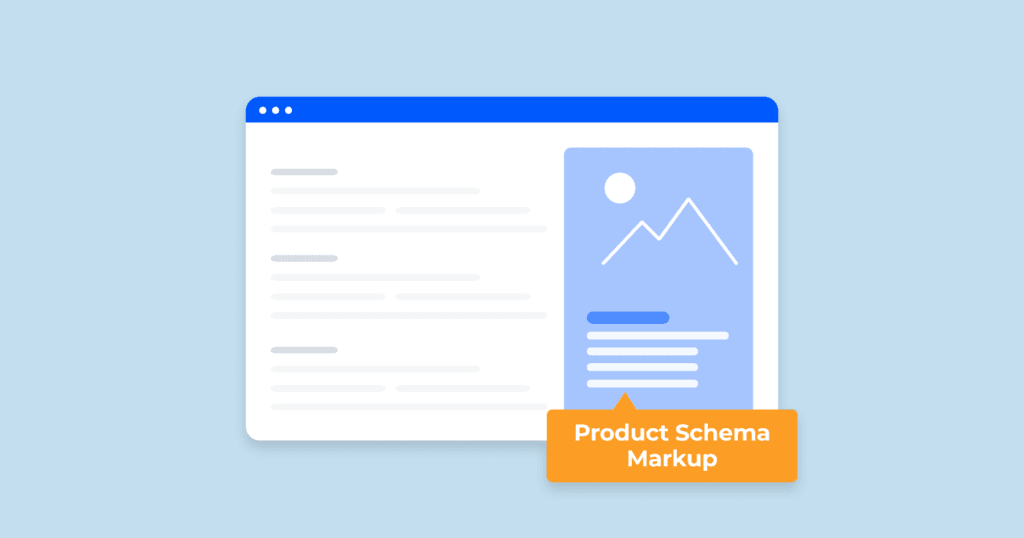
Rich snippets make your products stand out in search results, increase click-through rates significantly, provide information searchers want directly in results, and give you competitive advantages in crowded markets.
Essential Product Schema Properties
Product schema includes these critical elements:
- Product name identifying the item clearly
- Product description summarizing key information
- Product image showing the main product photo
- Brand name for branded products
- SKU, GTIN, or MPN as unique identifiers
- Price and currency for current pricing
- Availability status like in stock or out of stock
- Aggregate rating and review count when available
Adding Review and Rating Schema
Implement review schema to show star ratings in search results, include aggregate rating data showing average customer scores, display review count indicating social proof, and update schema dynamically as new reviews come in.
Testing Schema Implementation
Use Google’s Rich Results Test to validate your schema markup, check Schema Markup Validator for errors and warnings, monitor Search Console for structured data issues, and test on staging before deploying to production.
Building Internal Links Between Products and Categories
Internal linking helps search engines discover and understand your product catalog while guiding customers to related items they might purchase.
Strategic internal links distribute authority throughout your site, help new products get indexed faster, increase average order value through cross-selling, and reduce bounce rates by keeping visitors engaged.
Category to Product Linking
Every product should link from at least one category page, breadcrumb navigation should show the path from homepage through categories, and related category links help shoppers browse similar items.
Related Product Recommendations
Link to complementary products customers often buy together, show similar items in the same category, display recently viewed products to aid comparison, and use “customers also bought” sections based on real purchase data.
Cross-Selling and Upselling Links
Recommend accessories or add-ons that complement the main product, suggest premium versions of the current product, and link to product bundles offering better value.
Boost E-commerce Rankings with Complete On-Page SEO Optimization
Optimizing your product pages for keywords, visuals, and user intent is essential, but true success in e-commerce SEO comes from implementing a comprehensive on-page SEO strategy. On-page SEO ensures that every element from product titles and meta descriptions to internal linking, schema markup, and content hierarchy is fine-tuned for both search engines and shoppers. When your on-page structure aligns with user experience and technical best practices, your product pages not only rank higher but also convert better. A complete on-page SEO approach helps your store attract qualified traffic, improve visibility, and drive consistent sales growth.
Optimizing Product URLs for SEO
Clean, descriptive URLs help both search engines and users understand what your product pages contain before visiting. URL structure also affects how easily search engines can crawl and organize your catalog.
Good product URLs improve click-through rates from search results, create logical site architecture, make products easier to find and share, and avoid technical SEO issues from poor structure.
URL Structure Best Practices
Use short, descriptive URLs including the product name, include category in URL for context like domain.com/category/product-name, use hyphens to separate words for readability, keep URLs under 75 characters when possible, and avoid numbers, dates, or random characters.
Handling Product Variations
Create separate URLs for significantly different product variations, use URL parameters sparingly and implement canonical tags properly, or keep variations on one URL with selectable options depending on your platform and SEO strategy.
Product Specifications and Technical Details: Structure That Ranks
Product specifications provide the detailed technical information customers need to make informed purchase decisions while giving search engines clear signals about product attributes and features. Well-structured specifications improve user experience, reduce returns from incorrect expectations, and help your products rank for specific attribute searches.
Structuring Specifications for SEO and Usability
The way you present product specifications affects both search visibility and customer satisfaction:
- Format specifications in clean HTML tables for easy scanning and comparison
- Use bullet points for feature lists rather than dense paragraphs
- Include searchable technical terms and industry-standard terminology customers use
- Create dedicated size charts and measurement guides with clear visual references
- Ensure specification tables are mobile-responsive and readable on small screens
- Add schema markup for product attributes like size, color, material, and dimensions
- Integrate relevant keywords naturally within specification labels and values
Leveraging Customer Reviews for SEO
Customer reviews provide fresh, unique content that search engines value while building trust with potential buyers. Reviews answer questions, address concerns, and provide social proof.
Pages with customer reviews rank better because they contain more unique content, demonstrate product popularity, answer long-tail keyword questions, and show Google that products are actively purchased.
Encouraging Customer Reviews
Send automated review requests after purchase delivery, offer incentives like discount codes for future purchases, make review submission easy with simple forms, respond to reviews showing you value customer feedback, and display reviews prominently to encourage participation.
Review Schema Implementation
Add review schema to display star ratings in search results, update aggregate ratings automatically as reviews accumulate, include individual review schema for detailed review markup, and monitor rich result performance in Search Console.
Managing Negative Reviews
Respond professionally to negative reviews publicly, address legitimate concerns and offer solutions, use negative feedback to improve products or descriptions, and never delete honest reviews even when critical.
Mobile Optimization for Product Pages
Most e-commerce traffic now comes from mobile devices, making mobile optimization essential for both rankings and sales. Google uses mobile-first indexing, meaning your mobile experience determines rankings.
Mobile-optimized product pages load faster, provide better user experiences, convert mobile shoppers more effectively, and rank better in mobile search results.
Mobile-Specific Optimization
Ensure responsive design adapts to all screen sizes, make buttons and links large enough for easy tapping, optimize images for mobile networks and screens, simplify navigation for small screens, and reduce page weight for faster mobile loading.
Mobile Page Speed
Compress images aggressively for mobile, minimize JavaScript execution, use lazy loading extensively, implement AMP for product pages if appropriate, and test on real mobile devices and connections.
Handling Out-of-Stock Products
Out-of-stock products create SEO challenges because removing pages loses rankings while keeping them up frustrates customers who cannot buy.
The best approach maintains SEO value while managing customer expectations and capturing potential future sales.
Best Practices for Unavailable Products
Keep product pages live with clear out-of-stock messaging, offer email notifications when items return to stock, suggest alternative products currently available, maintain product schema with availability status, and use 301 redirects only for permanently discontinued items.
Seasonal Product Strategy
For seasonal items, keep pages live year-round showing next availability, update content to remain fresh and relevant, maintain rankings during off-season, and drive pre-orders or waitlist signups.
Product Page Speed Optimization
Page speed affects both user experience and search rankings. Slow product pages lose sales to faster competitors and rank lower in search results.
Fast-loading product pages keep shoppers engaged, reduce bounce rates, improve conversion rates, and satisfy Core Web Vitals requirements.
Speed Optimization Tactics
Optimize and compress all product images, use modern image formats like WebP, implement lazy loading for images, minimize JavaScript and CSS files, enable browser caching, use a Content Delivery Network, and eliminate render-blocking resources.
Measuring Product Page Performance
Use PageSpeed Insights to test individual product pages, monitor Core Web Vitals in Search Console, track real user experience data, and set performance budgets preventing speed degradation.
Avoiding Duplicate Content Issues
E-commerce sites often struggle with duplicate content from similar products, manufacturer descriptions, and faceted navigation creating multiple URLs for the same content.
Duplicate content dilutes ranking power, confuses search engines about which page to rank, and wastes crawl budget on redundant pages.
Duplicate Content Solutions
Write unique descriptions for every product without copying manufacturers, use canonical tags to indicate preferred URLs for similar products, implement noindex for filter and sort variations, consolidate very similar products when appropriate, and block faceted navigation parameters in robots.txt when needed.
Manufacturer Description Problem
Rewrite all manufacturer descriptions in your own words, add unique sections with your insights or recommendations, include customer use cases and examples, and combine specs with unique benefit statements.
Category Page Optimization Strategy
Category pages organize your product catalog and often rank for valuable commercial keywords. Well-optimized category pages drive significant traffic and revenue.
Strong category pages help customers find products easily, rank for broad product type keywords, distribute authority to individual products, and provide clear site architecture.

Category Page Content
Include unique category descriptions explaining what the category contains, add buying guides helping customers choose products, incorporate relevant keywords naturally, and provide filters and sorting options.
Category to Product Linking
Link to all products in the category, use descriptive anchor text in product links, feature popular or recommended products prominently, and implement pagination properly with rel next/prev or view all.
Product Page Conversion Optimization
SEO brings traffic to product pages, but conversion optimization turns visitors into buyers. The best product pages balance SEO requirements with conversion best practices.
High-converting product pages improve ROI from SEO traffic, reduce wasted ad spend, increase average order value, and build sustainable business growth.
Trust Signals and Social Proof
Display security badges near checkout buttons, show customer reviews and ratings prominently, include trust logos from payment providers, highlight money-back guarantees or free returns, and feature customer photos when available.
Clear Calls to Action
Make add to cart buttons prominent and obvious, use contrasting colors that stand out, write action-oriented button text, place primary CTA above the fold, and eliminate friction in the purchase process.
Your Product Page SEO Action Plan
Start optimizing your product pages systematically by prioritizing your best-selling items and highest-value products first for maximum impact on revenue and rankings.
Begin with product titles and descriptions ensuring they are unique and keyword-optimized, then move to image optimization and alt text, implement product schema markup across your catalog, and build internal linking between related products and categories.
Monitor your results through Google Search Console tracking impressions and clicks for product pages, measure organic traffic growth to product pages, track conversion rates from organic traffic, and analyze which optimization efforts deliver the best ROI.

